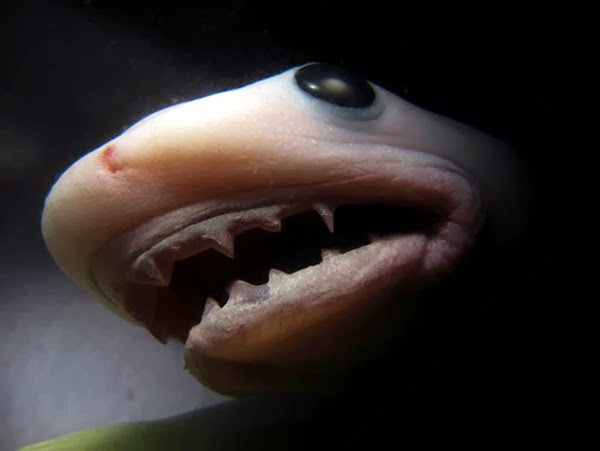As soon as tiger shark embryos develop teeth they attack and eat each other in the womb

As soon as tiger shark embryos develop teeth, they attack and eat each other in the womb.

Sharks, the majestic predators of the ocean, possess a reputation for their fierce nature and predatory instincts. Among these remarkable creatures, the tiger shark (Galeocerdo cuvier) stands out with its distinct features and behavior. Native to tropical and temperate waters around the world, tiger sharks are known for their voracious appetite and intriguing reproductive habits.
Research has revealed a fascinating fact about tiger sharks: as soon as their embryos develop teeth, these tiny predators engage in a cruel and cannibalistic behavior within the womb. Yes, you read it correctly - sibling rivalry starts before they are even born. This phenomenon, known as intrauterine cannibalism, occurs in numerous shark species, including the tiger shark.

The Brutal Competition Begins
Inside the mother’s womb, tiger shark embryos hatch from eggs and develop rapidly. Around the fifth month of gestation, these tiny sharks start growing teeth, marking an important milestone in their development. However, this stage also initiates a sinister process known as embryonic cannibalism.
The developing tiger shark embryos exhibit an alarming behavior of attacking and consuming their fellow siblings within the womb. These unborn predators engage in a ferocious struggle for survival, where only the strongest and most resilient individuals emerge victorious. This brutal competition ensures that only the fittest will reach birth.
Understanding the Reasons
Scientists have put forth several theories to explain the occurrence of intrauterine cannibalism among tiger sharks. One possibility is the limited space within the mother’s womb. As the embryos grow, the available space becomes increasingly limited, intensifying the competition for resources. In such a confined environment, the stronger embryos, equipped with developed teeth, have an advantage over their weaker counterparts.
Additionally, this phenomenon can be attributed to the shark’s natural instinct to hunt. Even in the absence of external threats, tiger sharks exhibit their predatory behavior from a young age. The cannibalistic behavior within the womb serves as an opportunity for these developing predators to practice their hunting skills and establish dominance.
Survival of the Fittest
As tiger shark embryos attack and consume each other, only the most resilient and dominant individuals survive to reach birth. This process, although seemingly harsh and ruthless, ensures that the strongest and most capable offspring enter the world. It is nature’s way of maintaining the population’s genetic integrity and preserving the species’ strength.
In conclusion, the revelation that tiger shark embryos engage in cannibalism within the womb unveils a captivating aspect of their reproductive journey. Through this intriguing behavior, these unborn predators establish their dominance and survival of the fittest is determined. Exploring these fascinating aspects of the animal kingdom provides us with a deeper understanding of the diversity and complexity of nature.
Source: PBS - Nature
Related Posts
Quick Links
Legal Stuff

